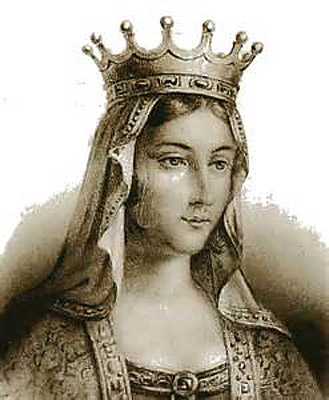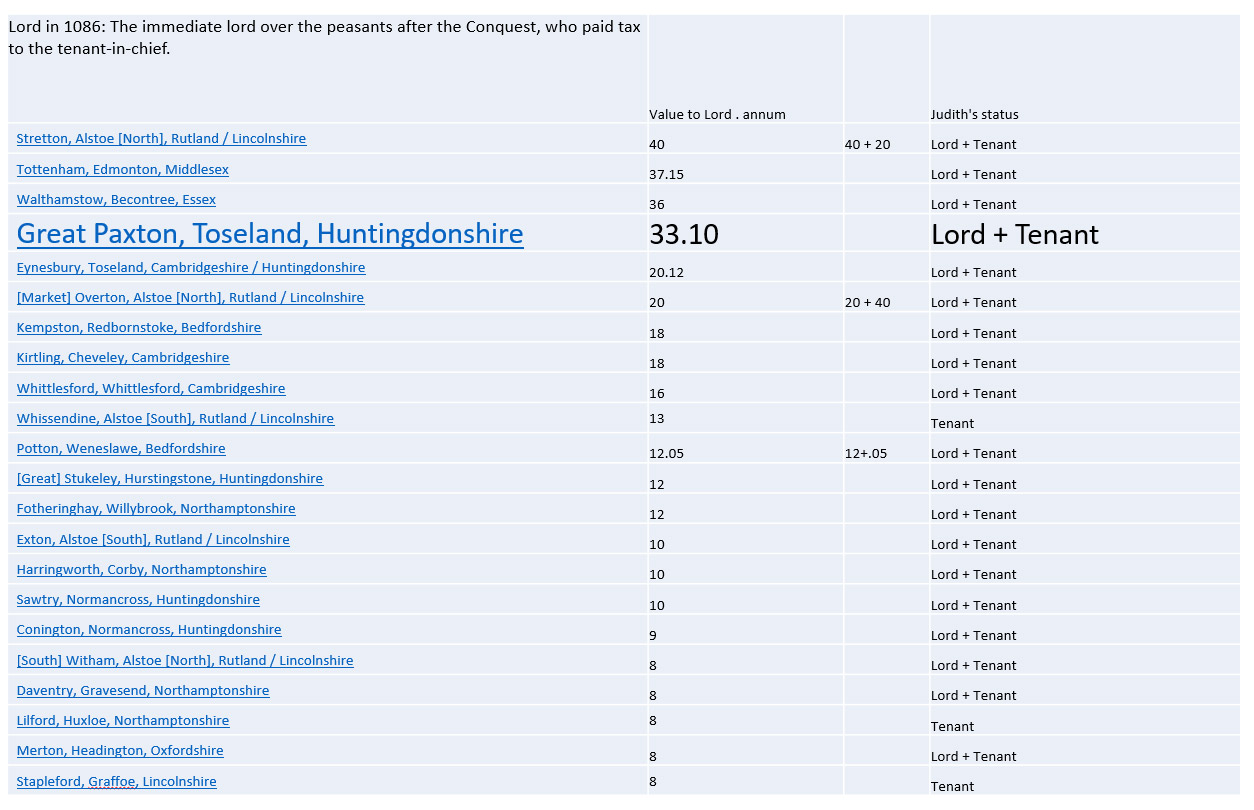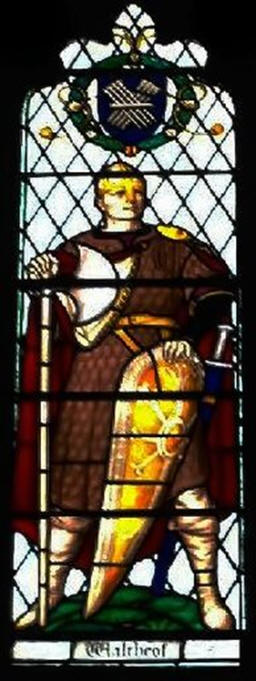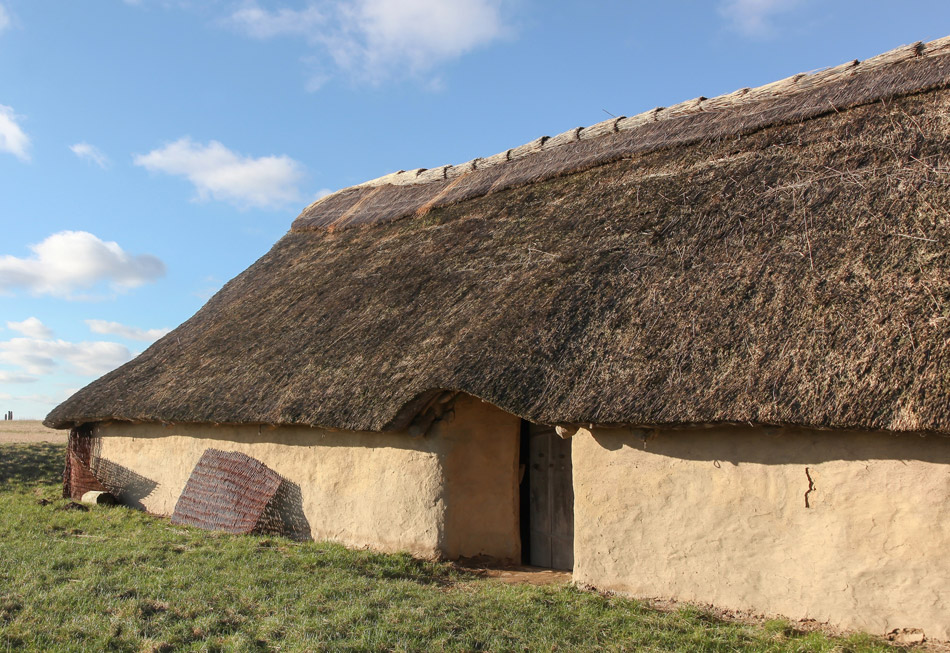Judith of Lens, Countess of Huntingdon 1054 to 1086-1090
Great Paxtonians
A series of articles about people who have lived in Great Paxton or have a connection with the village.
Judith was born in 1054 (maybe 1055) in Lens, northern France, a Norman noblewoman of the House of Capet, her uncle William would become the conqueror of England in 1066.
.jpg) Arms of the Kingdom of France in the time of the House of Capet |
At the age of 15 or 16 in 1070 Judith married 20 year old Earl Waltheof of Huntingdon and Northumbria at Artois, France. Following this she is recorded as holding properties in 10 counties in the Midlands and East Anglia most of these apparently gifts from her uncle now King William the First of England (William the Conqueror) following the Norman Conquest.
Some of these properties had previously been held by Earl Waltheof who was left with only one manor in his own name. His lands had been taken from him by William and then later given back but now to his wife Judith. The marriage was described as being arranged by William "to strengthen the bonds of friendship". Waltheof was a Saxon Earl who had not fought against William at the Battle of Hastings the event that led to William conquering England, he was a useful link to the people of William’s new kingdom and the marriage would have been seen as a way to keep him loyal.
Pachstone as Great Paxton was then known was one of the Manors that were given to Judith, it had previously belonged to King Edward the Confessor as last recorded in 1066. Judith is recorded in the Domesday book of 1086 as "Judith the Countess", the title of Countess of Huntingdon being one of those bestowed upon her, though Huntingdon itself was owned by King William.
Each Manor had an owner known as the "Tenant in Chief" (holding the land under some form of tenure from the king) and a "Lord" who oversaw the day to day management of the manor. Sometimes these were the same person, sometimes they were two different people with the Lord renting the manor from the owner. It was unusual at the time for a woman to be both owner and Lord but Judith fulfilled both roles at Pachstone and at over a third of her properties.
 Judith
owned a very substantial number of properties, 193 in all as
recorded in the Domesday Book. She
was the female with the largest number of land holdings in the
country by far and the 22nd largest landowner in
all of England. The next largest number of properties owned
by a woman was “Hugh (son of Grip's) wife (Hawise)” the 145th
largest landowner in the country with 46 properties, a lady
who only got third billing in her own description.
Judith
owned a very substantial number of properties, 193 in all as
recorded in the Domesday Book. She
was the female with the largest number of land holdings in the
country by far and the 22nd largest landowner in
all of England. The next largest number of properties owned
by a woman was “Hugh (son of Grip's) wife (Hawise)” the 145th
largest landowner in the country with 46 properties, a lady
who only got third billing in her own description.
The Domesday Book lists the value of properties, of Judith’s 193, Pachstone is the 4th most valuable to her worth 33 pounds and 10 shillings per year. This was an important place with arable land, meadows, woodland, 3 water mills, a large church and a population of 240 to 350 people.
While there is no record (yet found) that Judith ever visited this village, there is circumstantial evidence that makes it almost inconceivable that she didn’t and points to the possibility of her living here from time to time moving around her properties as was common at the time rather than living in one place.

The top 22 most valuable
properties owned by Judith

Judith's
Properties
spreading land ownership across many
places like this
made it more difficult for a landowner to raise
an effective and coherant army
A Multiple Estate and a Royal Vill
We know that Pachstone's (Great Paxton’s) Saxon church was a “Minster” the building of which began around 1020. This must have already been a very significant and important place for such a church to be built here. A description from the 11th century states “This was an Ancient Parish and a major Edwardian Manor”. The Edwardian period referred to being that of Edward the Confessor (1003 - 1066), so in the 1000's Great Paxton was already "Ancient".
A Multiple Estate was a common feature in the English landscape at this time, it consisted of a central caput (literally head, the administrative or controlling centre) from where the estate was managed, a minister church giving support to the whole estate and surrounding settlements specializing in particular crops. These large estates later fragmented into smaller units which became independent parishes. Such estates were usually owned by the king or an important monastery.
Pachstone had been owned by King Edward the Confessor prior to it coming into Judith’s hands. It was known to have three berewicks (outlying settlements that didn't have their own church, physically detached but belonging to the Lord of the Manor) which became Little Paxton, Toseland and one other sometimes thought to be Abbotsley though it could be the abandoned village of Boughton across the river at about the point where Bell Ford formed a crossing almost due West of the church. Great Paxton’s minster church is of sufficient age, size and imposing stone architecture to fit the pattern. When a Multiple Estate later fragmented the importance of the minster church diminished, Great Paxton’s church seems to have been at its height at and in the two centuries after completion, diminishing in physical size through re-modelling as well as social importance as the surrounding parishes gained their own churches.
A Royal Vill was a central settlement of a rural territory in Anglo Saxon England, it would be visited by the King and members of the royal household on regular circuits of their kingdoms. The Domesday "vill" was the smallest unit in the administrative system. A lack of long distance trade in foodstuffs meant everywhere had to be agriculturally self-sufficient. While Judith was not the monarch, she was the monarch's niece and a major land owner, she would have probably used the manors where she was Lord and Tenant in Chief while travelling around. As Pachstone was one of the most valuable of her properties and likely a Multiple Estate there seems a high probability that this may have been a Royal Vill used by Judith and her household when visting, probably staying in a longhouse.
 Judith
and Waltheof
Judith
and Waltheof
Judith had three children with her husband Earl Waltheof.
Waltheof was accused of treason against King William in 1075 (at age 25) in what was known as the Revolt of the Earls, he was imprisoned for almost a year after which he was beheaded on the 31st of May 1076 at St. Giles’s Hill, near Winchester, he was the last of the Saxon Earls. The accounts of Waltheof’s involvement vary, he may have been betrayed by Judith or he may not and he may have been completely innocent. His body was initially thrown in a ditch but was retrieved by supporters, Judith arranged for a honourable burial at Crowland Abbey near Peterborough.
Following Waltheof's execution William betrothed Judith to Simon I of St. Liz, 1st Earl of Northampton though she refused the marriage and fled the country to avoid William's anger leading to him confiscate all of her English estates temporarily before returning them later. Simon would go on to marry Judith’s eldest daughter Maud in 1090.
Judith founded Elstow Abbey in Bedfordshire around 1078, she also founded churches at Kempston and Hitchin. The parish of Sawtry Judith in Huntingdonshire is named after her, it is a deserted village part of the area of which has now been absorbed into Sawtry. Judith died in about 1090 at around age 35 in Fotheringay, Northamptonshire, England.
It is unknown where Judith lived following Waltheof’s death, there are several of her possessions of land that claim she lived there and of course they may all be correct to an extent if she was of the habit of regularly moving around.
Judith’s daughter Maud was widowed on the death of her husband Simon and married David I, King of Scots in 1113. As a result of this marriage, David acquired the Earldom of Huntingdon as well as a legitimate claim to a large part of England including Pachstone.
Great Paxton, A Vill - Still
Vills were the smallest unit in the Domesday administrative system, they were areas similar to a parish in the south or township in the north. In Cambridgeshire, Domesday vills are almost exactly mirrored by the civil parishes of the late nineteenth century, suggesting a continuous history of over a millennium. Great Paxton was historically part of Huntingdonshire but the structure here has also been retained in many places though the larger Royal Vill of Pachstone was fragmented into Great and Little Paxtons, Toseland and a third unrecorded "berewick" which I believe to likely be the lost village of Boughton.
Pictures: Top of page, Adelaide of Normandy, Judith’s mother (full length). Black and white - Maud of Huntingdon, Judith’s daughter (half length), There are no pictures of Judith though these give an idea of what would been her style.

 Judith
of Lens never lived in Great Paxton but is one of the earliest
historical figures with a village connection that we know about.
Judith
of Lens never lived in Great Paxton but is one of the earliest
historical figures with a village connection that we know about.
